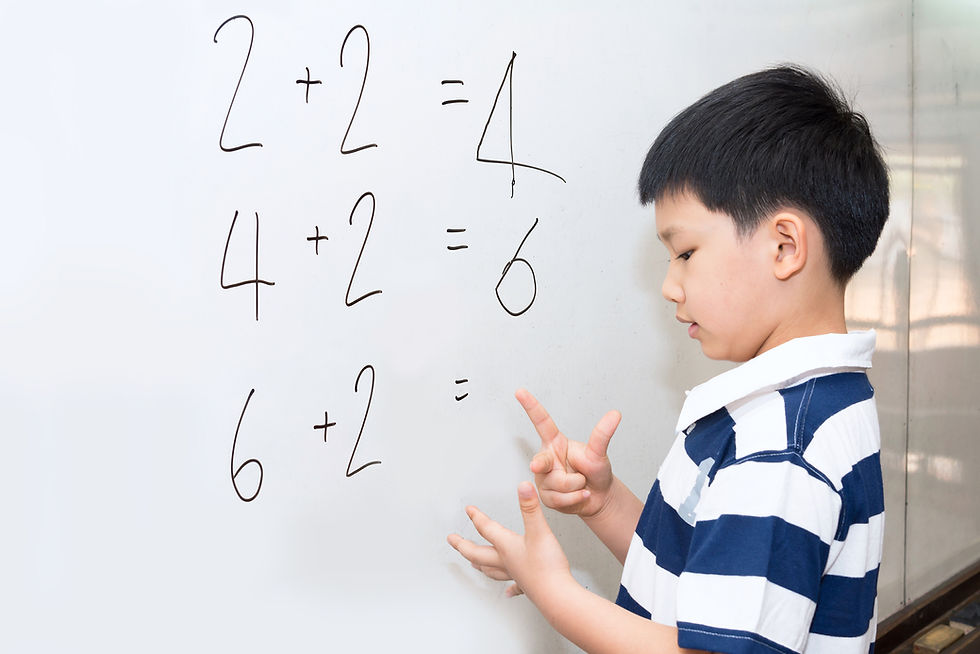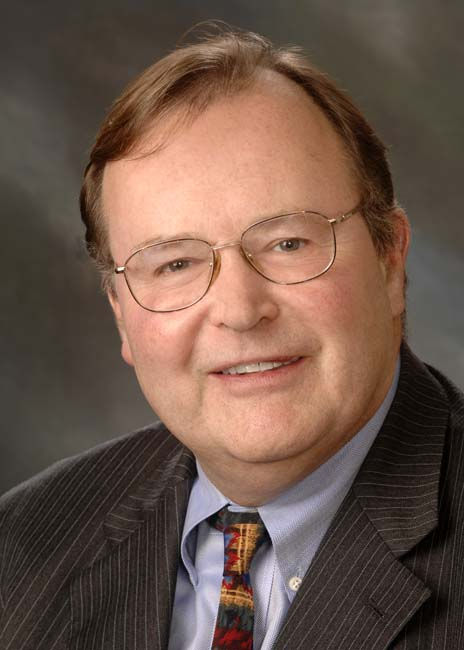
David Cowles
Oct 15, 2022
If counting is such a powerful tool, how is it that for the most part, we don’t count?
In our culture, one of the first things young children learn to do is to count. Sesame Street devoted a whole character to the concept (The Count). Typically, kids first learn the names of the numerals. Just as they learn their ABC’s, so they learn their 1, 3, 2’s
Not quite, but good try!
Sidebar: Young children rarely mistake the order of letters in the alphabet, where order doesn’t matter, but they often mistake the order of numerals, where it matters a lot. You can know the alphabet without knowing the proper order of the letters (unless you’ve been stopped for a DUI), but a child who recites numerals in no particular order will not be said to know her numbers.
Eventually, kids come to understand that just enunciating the numbers’ names will not win them the praise they crave; they have to get the numbers in the right order as well.
Ok so, 1, 2, 3, 4, 5, 6, hooray!
“So how many blocks are on the table?” Stupefied silence. (What do your crazy numbers have to do with my brightly colored blocks?) The hard job begins: teaching a child to use the language of numbers to count a number of objects. Ok, one block, two blocks, three blocks, got it!
Well, not quite. I arrange the blocks at the nodes of a Star of David. How many blocks now?...
Well, not to worry, we’ll get there, but when we do, and we will, we’ll discover that we’re still not there.
Huh? There, not there, I don’t get it.
Even after Sally can flawlessly numerate groups of 1, 2, 3, 4, 5, 6 blocks, can she also numerate 1, 2, 3, 4, 5, 6 lollipops?
“Sally, would you rather have two lollipops or six?”
“Two. I want two!” Ok, we’ve still got some work to do, but eventually… Once the child understands that the number 2 applies equally to two crayons, two siblings, or two minutes in time out, a milestone has been reached.
Two caveats: First, notice how many levels of abstraction are required to get from the concept of mere plurality to a true mastery of the number system.
Second, curb your enthusiasm, Larry David! Chimpanzees, smart parrots, and even fish can do as well.
What’s amazing is not how bright your little Sally is. What’s amazing is that any member of any species can ever learn to count. As adult human beings, we take counting, and the arithmetic it generates, for granted. “It’s second nature to me now!”
Alright then, if counting is such a powerful tool, how is it that for the most part, we don’t count?
Even before we learn to count in Arabic (1, 2, 3) we learn another system of quantification that is much more practical for daily living. After all, most toddlers don’t work for Big Five accounting firms; nor are they responsible for landing capsules on the moon. Neither are most adults, come to think of it. So, what’s the use of learning to count?
“Mommy, whyyyy did you make me learn to count? I’ll never use it when I grow up. I’m going to be a cowgirl, not an astronaut.”
Truth to tell, Mommy only taught Sally to count so that she could brag about her to all the other primate, parrot and pickerel parents at the next Mommy and Me. Under the radar, Mommy had already taught Sally a much more useful and more distinctively human way to express ideas about quantity.
Numeration begins with a primal distinction: yes or no, life or death, 0 or 1, none or some. Ultimately, I suppose the universe does boil down to Being or Nothingness…but not where I live.
In my world, we always seem to be somewhere in-between yes and no, life and death, some and none. So, we need to add a third term, between yes and no and that term is maybe. Maybe is a measure of the probability that x > 0. If x = 0, then the probability that x > 0 is 0, and there’s no maybe about it! Likewise, if x = 1, then the probability that x > 0 is 1, not ‘may be 1’.
Maybe is useful when the value of x is unknown, either because is it still undetermined or because information regarding the determination is unavailable, or because such information is being deliberately concealed.
Sally learns probability long before she learns arithmetic. Instead of learning discrete numbers, Sally is mastering the notion of a quantitative continuum.
Maybe runs the gamut between 0 and 1. ‘Maybe’ implies a probability greater than 0 but less than 1. And yet ‘the maybe function’ can only resolve in an integer: e.g., 0 or 1. Sound familiar? Welcome to the Wild World of Quantum Mechanics!
Sally (and every other Sally or Sam in our culture) learn quantum mechanics first; Newtonian Mechanics can wait ‘til middle school.
Mommy Math begins with three terms: no (0), yes (any positive integer), and maybe (the probability that x will not equal zero).
Is that it? Yes…and no. Can I build a complete algebra with just these three terms? Maybe! These are the core concepts of Mommy Math; yet it includes other quantitative terms as well. Each of these terms has a specifiable meaning, none of which we would recognize as a number!
First, let’s talk about the set of all non-negative integers: 0, 1, 2, etc. (What could be more fun?) Mommy Math includes these terms…but they don’t mean what you or I mean by 0, 1, 2. Mommy’s integers are “fuzzy,” ours are not. Just try palming off 11 eggs on a customer and calling it a fuzzy dozen! Not fuzzy was it!
What is it that we like so much about integers? They are precise! “One is one and all alone and ever more will be so.” If children can learn the alphabet to the tune of Twinkle, Twinkle Little Star, they can learn to count to the tune of The 12 Days of Christmas.
“Abandon all precision, ye who enter here:” you’re in the world of Mommy Math now. In this world, an integer does not denote a discrete numerical value; it denotes a range of probabilities.
Take, for example, the integer 1. In Mommy Math, “one” (like all integers) is a probability function. When that functions resolves, it will resolve as a non-negative integer, most often “1.” But there is even a ‘non-zero probability’ that “the function formerly known as one” will resolve as “0” or as a number like 10^100 (a ‘google’) …but please, don’t hold your breath.
Fan Fiction: “Mommy, can I have a cookie…Maybe…Ok, yes, you can. In fact, you can have a google of cookies.” How often does that happen? It’s certainly an ‘improbable outcome.’
Mommy Math includes the set of non-negative integers, but those integers represent probability distributions, not discrete values. Not surprising, integers are not the preferred mode of numeration in Mommy Math.
Mommy Math includes non-numeric terms for quantitative concepts that cut across the set of non-negative integers:
“Maybe” means 0 or 1 or, less often, an integer greater than 1.
“Some” means 1 or more.
“A Couple” means 2 or 3*.
“A Few” means 3, 4, or 5.
“Many” means 4 or more.
“A Lot” means 5 or more.
*Note: we normally use ‘couple’ to denote ‘precisely 2,’ but ‘precisely 2’ does not exist in Mommy Math. In Mommy Math, every term represents a probability distribution, and ‘couple’ is no exception.
Notice how the terms overlap. Say you ask for “cookie” (and you don’t mean that other Sesame Street icon, Cookie Monster). It’s been determined that you will be given three cookies. That determination could be conveyed to you in several mathematically consistent ways.
Maybe
A couple
A few
3 is a truth function of all three propositions.
So what? Why is any of this of any importance?
First, contrary to what was once imagined, not all human cultures include the activity we know as ‘counting.’ There is at least one Amazonian tribe (the Piraha) whose members have no concept of number whatsoever. They do have quantitative concepts like ‘more’ or ‘less’ but nothing that could be interpreted as an integer. We explore this phenomenon in greater detail in Why Xiako Can’t Count?
Second, many other cultures have truncated number systems. The details vary. One example: “1, 2, > 2.” Another: “1, 2, 3, many” (where ‘many’ denotes 2 or 3 or any amount greater than 3). Counting wouldn’t be of much use to these people.
Finally, we observed earlier that some members of some non-human species can also count, at least up to a point. Many can count up to 6, for example, some even make it to 9; and they can perform basic arithmetic operations within those domains.
I’ll pit my pet Polly against silly Sally any day when it comes to basic counting and arithmetic. Polly already outperformed 40% of the kids in Mrs. Sullivan’s first grade class... and Sally is a long way from first grade.
Where do we go from here? Can we build a full blown ‘algebra’ by applying ‘logic’ and using just terms (and their meanings) from Mommy Math? How would Polly’s performance compare with Sally’s if the same tests were given to both in Mommy Math? (Could it be that the fuzzy world of Mommy Math is the last stand of human exceptionalism?)
I titled this article Mommy Math #1 because I look forward to publishing Mommy Math #2 and Mommy Math #3 in future issues of ATM. Do you have ideas on this topic? Will you contribute them in the form of a ‘Mommy Math’ article for a future issue? Check out our Writer’s Specs for information regarding the submission process and our compensation schedule.

David Cowles is the founder and editor-in-chief of Aletheia Today Magazine. He lives with his family in Massachusetts where he studies and writes about philosophy, science, theology, and scripture. He can be reached at david@aletheiatoday.com.
Do you like what you just read? Subscribe today and receive sneak previews of Aletheia Today Magazine articles before they're published. Plus, you'll receive our quick-read, biweekly blog, Thoughts While Shaving.


